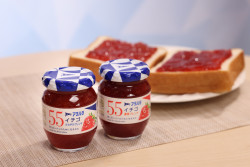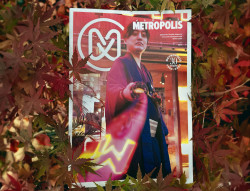
Originally published on metropolis.co.jp on July 2011
Preconceptions are a terrible thing. Accordingly, I make it a rule to occasionally force myself to visit exhibitions that I think I won’t like. In this counterintuitive way I have come across some of the best exhibitions I have experienced.
On paper, Ming Wong’s “Life of Imitation” shouldn’t work. The exhibition combines a collection of old Singaporean movie memorabilia with short, disjointed movies, in which the cross-dressing artist plays most of the roles. And if that doesn’t sound dull enough, there are also a few documentaries where peripheral figures in the movie business–i.e. the girl who sells tickets and the otaku-like collector of movie memorabilia–are interviewed.
But strange as it sounds, this is a rewarding and enjoyable show. Part of the reason is the venue. The Hara is an elegant, but time-worn art deco building that is the perfect setting for the nostalgic mood that the show evokes with its old movie posters and photographs.
Wong’s film installations add to this atmosphere, because the film extracts he has chosen to recreate are from old, rather clichéd Hollywood and Malaysian movies. In 4 Malay Stories (2005), he recreates extracts from the movies of P. Ramlee, a Malay actor and director whose films and music enjoyed great popularity in Southeast Asia in the 1950s and 1960s; while Life of Imitation (2005), the work that gives the exhibition its title, is a reworking of a Douglas Sirk melodrama from 1959 about a black mother and her “white” daughter.
Wong’s approach is to immerse himself in the clichés and stereotypes of these films. In 4 Malay Stories he plays all 16 characters from the adulterous Dr. Rushdi and his sex-starved wife, to Aduka, a historical character who falls foul of newly introduced Islamic laws. Played out on four screens and broken up into several short takes that follow each other before moving on to the next scene, the films eschew the linear narrative of movies in favor of a rhythmic, hypnotic quality in which the clichéd language attains poetry and comedy.
In Life of Imitation, Wong uses three male actors, each of a different race, to switch between the two roles of mother and daughter, with two screens and two screen-sized mirrors. While the central situation is very clear and allows us to keep our bearings, nothing else is. One moment the daughter is played by one actor and the next by another, while on the opposite screen, the third actor is spouting her lines. The effect is to disorientate, amuse, and once again bring the clichés into sharp focus.
If you try really hard, you can probably read some deep and worthy message about race and multiculturalism into this, but my impression was that Wong was just taking the flaky premise of the original movie to its absurd limits.
The most interesting of Wong’s film installations is the dyslexically-entitled In Love for the Mood (2009), which riffs on Wong Kar Wai’s 2000 film, In the Mood for Love, set in 1960s Hong Kong. The artist gets a Western actress, Kluane Saunders, to play both the male and female halves of a couple, and sets different takes of the same scene side by side on three screens with subtitles in several languages.
As she bravely struggles with the unwieldy Chinese dialogue and its cheesy romantic clichés, as well as both roles, the young actress becomes an increasingly empathetic figure, giving Wong’s film an emotional depth and pathos quite different from the original.
Because of the complex visual semantics, cross-dressing, and racial elements, Ming Wong’s art is ideal fodder for over-intellectualization by curators and art writers. No doubt this is an advantage in getting it into publicly funded institutes around the world with their “progressive agendas.” But this show works because, while it gently mocks, it also affectionately collaborates with the nostalgic magic of old cinema.
The Hara Museum of Contemporary Art, until August 28. See listing for details.








